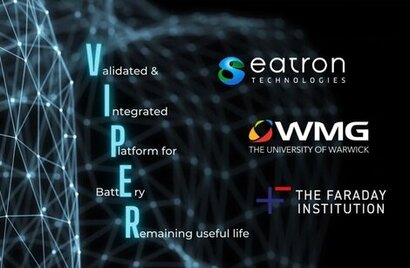
The condition and performance of a battery changes as the cells within it age over time. If this natural degradation is not monitored closely, it can lead to cell failures with serious consequences. Traditional RUL estimates often rely on simple voltage-based analytics that may miss complex failure conditions, potentially risking the safety of consumers, while others that err on the side of caution may result in perfectly healthy battery packs being unnecessarily rendered unusable.
By accurately predicting a battery’s RUL, it becomes possible to extract the maximum performance and longevity from it, without compromising safety.
The solution developed by Eatron and WMG, with funding from the Faraday Institution, can be embedded in an automotive-grade battery management system (BMS) or deployed across a cloud-based platform, a concept that is particularly appealing for fleet applications.
In addition, when an automotive battery is eventually redeployed into its second life, it can be accompanied by an accurate picture of its health in the form of a battery passport that negates the need for expensive testing and increases the breadth of its operating window.
“Unlocking the hidden capacity of a battery has the potential to increase an EV’s usable range and extend its lifetime” said Dr Umut Genc, CEO of Eatron. “There are benefits for the used EV market, too; as a result of these highly accurate RUL estimates, buyers could have confidence in the condition of a vehicle’s battery and be reassured about its ability to perform for many years to come.”
For additional information:

